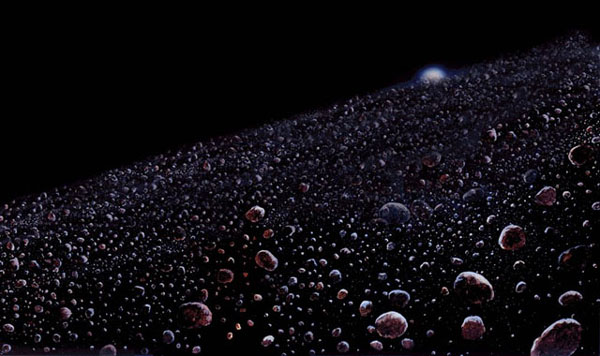
-Opinion based

 Eris, is another dwarf planet that orbits our sun every 557 years. Our sun has enough gravitational pull on an object in space almost 100 AU away from it. That distance is just unimaginable 1 AU is barely conceible never mind a hundred times that. The extremity of the sun's power cannot be understated enough. In reference to that I'd like to recall an experiment I did at Bristol Community with Professor Marks. He had us step outside and showed the mere foot distance scaled version of just the terrestrial planets. By the time we were four parking lots or so apart it was apparent that his distance between one another is vast. Never in my right mind could we ever really measure Eris. We'd be in separate towns, possibly separate states. So astronomers first Pluto gets dropped as a planet, now it's not the furthest dwarf planet out there? Pluto has to me fallen down the list of significance in the solar system. In a way Pluto is the pioneer of being a dwarf planet I guess. The fact that these discoveries were made during my lifetime is interesting and significant toward the 2000s generation contribution to astronomy. It futhers our understanding of gravitational pull as well, and just how strong the sun really is.
Eris, is another dwarf planet that orbits our sun every 557 years. Our sun has enough gravitational pull on an object in space almost 100 AU away from it. That distance is just unimaginable 1 AU is barely conceible never mind a hundred times that. The extremity of the sun's power cannot be understated enough. In reference to that I'd like to recall an experiment I did at Bristol Community with Professor Marks. He had us step outside and showed the mere foot distance scaled version of just the terrestrial planets. By the time we were four parking lots or so apart it was apparent that his distance between one another is vast. Never in my right mind could we ever really measure Eris. We'd be in separate towns, possibly separate states. So astronomers first Pluto gets dropped as a planet, now it's not the furthest dwarf planet out there? Pluto has to me fallen down the list of significance in the solar system. In a way Pluto is the pioneer of being a dwarf planet I guess. The fact that these discoveries were made during my lifetime is interesting and significant toward the 2000s generation contribution to astronomy. It futhers our understanding of gravitational pull as well, and just how strong the sun really is.

